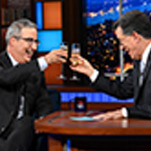The Top 25 Highest-Grossing Movies of All Time Worldwide
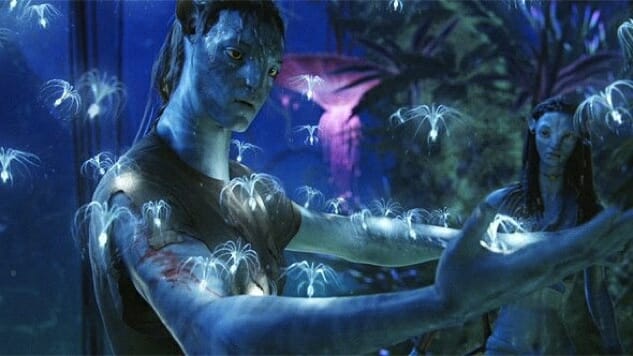
What are the highest-grossing movies of all time? It might surprise you that two of the 25 highest-grossing movies of all time came out in 2022, and 2021 added another another. But 2009’s Avatar still holds the top spot. These stats, of course, are skewed by rising ticket prices and increases in population. Adjusted for inflation, no movie can match the $8.2 billion haul that Gone with the Wind’s $390 million box-office receipts since its 1939 release would be worth in today’s dollars. But here, we’re looking at the highest-grossing movies ever in gross dollar receipts.
With the exception of Titanic, all of the biggest box office movies are part of a franchise, making us believe that there were probably some studio execs at Paramount or 20th Century Fox trying to convince James Cameron that he should do a sequel (“Are we sure that Jack really dies? Can he come back as a ghost?”). Speaking of Cameron, directing three of the top four biggest box-office hits of all time is quite a feat, one we’re sure hasn’t gone to his head. That they include both a historical romance drama and a pair of sci-fi action/adventures makes it all the more impressive.
The list of the highest-grossing films of all time includes some highly enjoyable movies and some that we can only shake our heads at and marvel at the worldwide moviegoer. And two movies from 2023 have just entered the list.
Here are the 25 highest-grossing movies of all time:
25. Barbie (2023)Box office: $1.19 billion
Director: Greta Gerwig
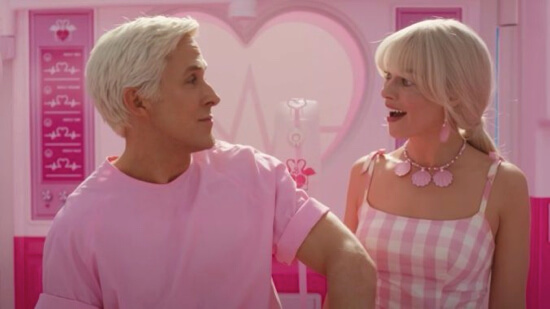
Bursting with big ideas on the complexities surrounding womanhood, patriarchy and the legacy of its eponymous subject, Barbie scores a hat trick for its magnificent balance of comedy, emotional intelligence and cultural relevance. The picture begins with a playful homage to 2001: A Space Odyssey’s Dawn of Man sequence. Except, in Gerwig’s prelude, the apes are young girls and the wondrous discovery they make is not a monolith, but a 100-foot tall bathing-suit-wearing Barbie (Margot Robbie), who is there to put an end to Planet Earth’s sexism with her mere aspirationalism. Life is idyllic until Robbie’s Barbie, who refers to herself as Stereotypical Barbie, begins to experience an unprecedented existential crisis. These uncharacteristic anxieties, coupled with the fact that her once-permanently-tippy-toed feet have fallen flat, lead Barbie on a quest to the Real World in hopes of returning back to her normal, carefree self. When her adoring Ken (Ryan Gosling) joins her in her cross-realm voyage, ideologies are swapped, havoc is wreaked and major changes are brought upon Barbie Land. Gerwig is grappling with these heavy ideas of patriarchy and gender, but Barbie always maintains a delightful sense of play and lightheartedness. This is largely due to the pink, campy, absurd and absolutely bewitching set work created by Barbie’s production designer, Sarah Greenwood, and set decorator, Katie Spencer. The incredible sets that we see in the film are real, tangible places whose presence create a nostalgic desire to feel, grab and touch. The believability of the sets—“this is a real Barbie Dream House and Robbie is a real life Barbie doll,” we think—makes for an interesting meta layer for the film. This sense of self-awareness touches almost every aspect of Barbie, from the set design to the campy performances and even its handling of its source material. Writers Gerwig and Noah Baumbach obviously have a soft spot for Robbie’s character, and the beauty of humans in general, but they don’t allow their work with a large corporation like Mattel to prevent them from exploring Barbie’s complicated legacy throughout the film. Like its protagonist, Barbie is all the things all at once. Funny. Sentimental. Entertaining. Confrontational. Celebratory. Heartfelt. Heartbreaking. Kooky. Emotional. And, maybe most interestingly of all, a damn good time capsule for what was exciting and frightening in mainstream culture at this particular societal moment.—Kathy Michelle Chacón
24. Iron Man 3 (2013)Box office: $1.22 billion
Director: Shane Black
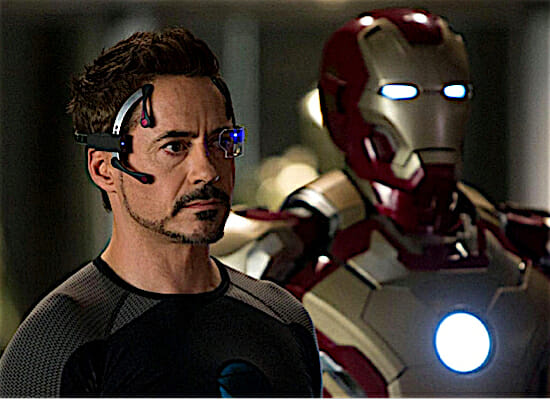
Though its titular hero spends 2/3rds of the film outside his armor, Iron Man 3 works. The film provides just the right mix of action (much of it explosive), chuckles (mostly via banter) and plot (fairly comprehensible). Some of that credit goes to director Shane Black, no stranger to the action genre as a screenwriter (Lethal Weapon, The Last Action Hero), nor to Robert Downey Jr. as a director (Kiss Kiss Bang Bang). At a time when Whedon’s Avengers still loomed large in the rearview mirror (and provided much of the impetus for Tony Stark’s personal character arc in Iron Man 3), Black keeps the plot and pacing under much firmer control than Jon Favreau did in Iron Man 2. But though Iron Man 3 is a better constructed film than its predecessor, ultimately it succeeds for the same reason the first two films did—Robert Downey Jr. is Tony Stark. Whereas most actors, no matter how adept the performance, play second fiddle to the character they portray, Downey Jr. has pretty much displaced Tony Stark, 50 years of comic book character development notwithstanding. In part, it’s because the character himself has never been as compelling as the armor he wore, but mainly, it’s because Downey Jr.’s Tony Stark is just so damned much more enjoyable to be around than Stark Classic. It doesn’t matter that, in terms of hero profiles, Downey Jr.’s breezy, edgy quipping is pure Spider-Man. In fact, it’s telling that, in a realm pretty much defined by a fandom that will wail and gnash teeth about even the slightest deviation from canon, no one really cared. It’s the primary reason why a superhero film where the protagonist spends most of his time out of his armor rather than in it is not just bearable, but downright fun. It’s why the neutering of an arch-villain—though still a troublesome precedent for the Marvel film universe as a whole—works fine within the framework of the film. It’s why, in the frivolous debates of the future, the question “Who was the best Iron Man?” will really be, “Who has done the best version of Robert Downey Jr.?” —Micheal Burgin
23. The Fate of the Furious (2017)Box office: $1.24 billion
Director: F. Gary Gray
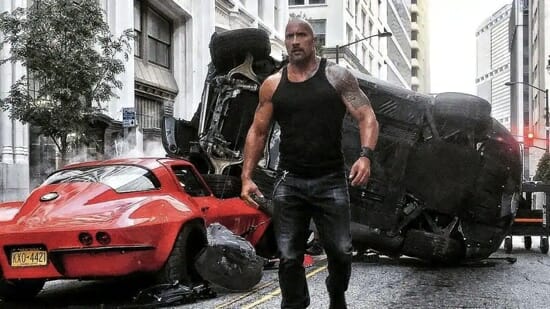
The Fate of the Furious is the main reason moving pictures exist: The glory of dynamic motion which involves the pulse and the heart. The Fast franchise is a group of action films centered around a crew of talented outlaws who engage in illegal street racing and, later, heists. Although the lineup has changed over the years, the basic formula has stayed the same: an eccentric crew of colorful characters with various talents, led by Dominic Toretto (Vin Diesel) and his co-conspirator/girlfriend/wife Letty Ortiz (Michelle Rodriguez) get involved in ever-increasing stakes. This group refers to themselves as “family,” and their bond is the sinew of the franchise. As the series escalates—escalation is the name of the game here—everybody eventually becomes part of the family, even the antagonists who are sent after them: the first movie saw undercover cop Brian O’Conner (Paul Walker) joining the crew; this habit is followed in later movies by Diplomatic Security Service agent Luke Hobbs (Dwayne Johnson). None of this dry summation can give you an accurate idea of franchise or its charm…which is that it is absolutely bazonkers: These are movies where topping the previous installment is itself the art. How much crazier can the stunts get? How strong is the family’s bond? How many incredible moments will these stars have on screen? How intense can the stakes get? How byzantine are the plots? How can they possibly pull it off? Any other movie franchise would have run out of gas—think of Brosnan-era Bond. But Fate of the Furious is so clever, so perfectly executed, emotionally sincere, self-aware and gloriously cinematic that I think it made me happier, and more entertained, than any other movie I saw in 2017. —Jason Rhode
22. Incredibles 2 (2018)Box office: $1.24 billion
Director: Brad Bird
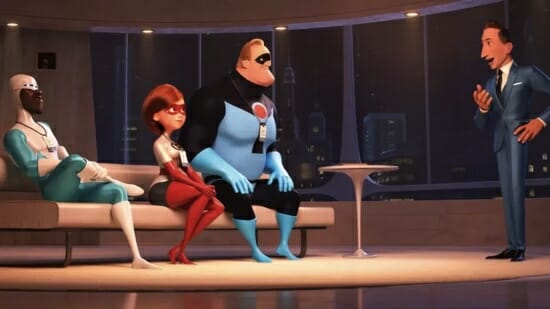
Incredibles 2 starts right where the first film ended, with the costumed Family Parr reacting to the arrival of the Underminer (John Ratzenberger). Their scuffle with the villain gains the attention of Winston Deavor (Bob Odenkirk)—or more precisely, allows Deavor and his sister, Evelyn (Catherine Keener), to gain the attention of the Parrs. The siblings want to bring supers back into the light, using Winston’s salesmanship and Evelyn’s tech to sway public opinion back to the pro-super side. To do so, they want to enlist Elastigirl (Holly Hunter) as the tip of the spear in their charm offensive, leaving Mr. Incredible (Craig T. Nelson) on the sidelines for now. (She tends to fight crime in a manner that results in less property damage than her husband, after all.) This sets up a second act that’s firmly by the numbers in terms of story development—watch the husband try to succeed as a stay-at-home dad!—yet no less enjoyable. Bob’s attempts to handle teen romance, Jack-Jack’s manifestation of powers and, horror of horrors, “new” math will strike a chord with any mom or dad who has ever felt overwhelmed by the simple, devastating challenges of parenthood. (The family interactions, one strength among many with the first film, remain a delight in the sequel.) Meanwhile, we get to watch Elastigirl in action, as she encounters, foils and matches wits with the film’s mysterious villain, Screenslaver. As in the first film, watching Helen Parr do the hero thing is also quite the delight—she’s resourceful, tough and, above all, a professional. Watching Elastigirl operate almost makes one feel sorry for the criminals. Delving more into the plot would do the film a disservice—suffice to say both villainous and family challenges are faced, and it takes a village, Frozone (Samuel L. Jackson) and Edna Mode (Bird) to emerge victorious. Whether you enjoy Incredibles 2 as much as the original will likely depend on your opinion of the latter, but regardless, you’ll be happy both exist. And in today’s sequel-saturated environment, that is practically a superheroic achievement in itself. —Michael Burgin
21. Beauty and the Beast (2017)Box office: $1.27 billion
Director: Bill Condon
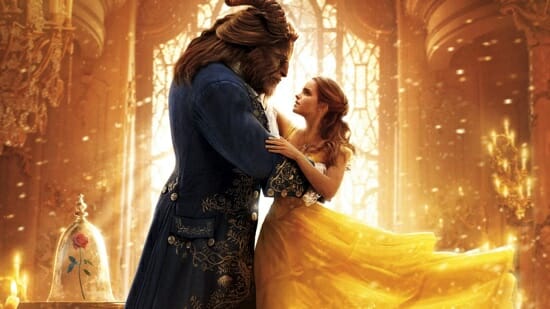
While a generation of kids gape at overwhelming CGI landscapes and a talking teacup, the generation before them wonder where all the magic went. An ostensibly live-action remake of the 1991 Disney animated classic, Beauty and the Beast hits all the notes of the original film slowly and without distinction. The new components of this version are great, but they’re jammed into an older model, one we’ve seen before, which can’t always use them to the best of their abilities. Introductory number “Belle (Little Town)” perfectly contrasts the sweeping introduction from Disney’s castle by looking and sounding like it came from a well-choreographed TV musical special. And yes, here that’s a plus. Cramming the screen with gesticulating townsfolk vying for their moment in the French sun makes a strong case for the song’s premise of a town both too small and too full. Then the plot picks up: Belle’s father and the town tinkerer, Maurice (Kevin Kline), is going to the market and will be back with a rose. Maurice serves as our protagonist for almost the first half hour of the movie, accidentally wandering into Beast’s castle, discovering its magic and anthropomorphic accoutrements, failing to escape, coping with his daughter’s sacrifice—offering herself as prisoner in place of her dad—and eventually running back to town. He wrings every drop of acting juice from his part, giving us an overprotective, loving, encouraging father whose helplessness against a town that doesn’t believe his story is genuinely moving. As the Beast, Dan Stevens gives an engaging performance, manipulating his elastic face and wild eyes into winks, smirks and terribly cold glowering gazes that, when the Beast is the only character on screen, work as well as some of the best CGI creature animation we’ve enjoyed on screen lately. Likewise, Emma Watson nails the role of Belle: Smirking at times, lovelorn at others. She’s the kind of adorably naïve, romantic dreamer that can still sell a little uppityness (“Little town filled with little people”? Belle, this is why the townsfolk dislike you) that makes for a good coming-of-age heroine. Despite some convoluted final action (not Twilight helmer Bill Condon’s directorial strong suit) and unbalanced music, Beauty and the Beast’s teary fairy tale ending survives it all thanks to the brief but colorful relationships we develop with the side characters. Even if they’re not the best they’ve ever been, the story’s quirks and core remain effective. There’s still beauty here to be found. —Jacob Oller
20. Frozen (2013)Box office: $1.28 billion
Directors: Jennifer Lee, Chris Buck

Everything old is new again in Hollywood these days, so it only made sense for Disney to revive the animated musical brand that dominated the early ’90s. The canny nostalgia play of Frozen catered not just to kids but also the parents who grew up quoting dialogue and humming tunes from Beauty and the Beast, The Little Mermaid, The Lion King and Aladdin. Very loosely based on Hans Christian Andersen’s classic story The Snow Queen, Frozen stacks the deck with big bold songs, scheming villains, wacky sidekicks, cuddly characters (ready made to become holiday merchandise) and not just one but two (!) new Disney princesses. Elsa, the elder of the two, was born with the ability to conjure snow and ice with her bare hands. That means the sisters can skate, sled or build a snowman whenever they please, much to young Anna’s delight. Unfortunately, Elsa’s incredible gift soon feels more like a curse when an ice-related accident leaves Anna injured and their parents forbid Elsa from using her magic. A terrified Elsa locks herself away in her bedroom, essentially abandoning Anna whose memory of the event has been erased by a kindly troll king (Ciaran Hinds). Not that Anna (voiced by Kristen Bell) is willing to give up on her sister so easily. She’s delighted when Elsa (Idina Menzel) comes of age and ascends to the throne, but trouble arises again when Elsa’s powers go public during an argument over Anna’s love-at-first-sight infatuation with charming visiting prince Hans (Santino Fontana). Elsa stuns her assembled subjects with angry bursts of ice and snow, fleeing to the mountains and literally freezing over her entire seaside Scandinavian village in the middle of summer. Local dignitary the Duke of Weselton (Alan Tudyk) proclaims Elsa a monster, but Anna knows better and resolves to track down her sister and bring her back to the kingdom. —Geoff Berkshire
19. Jurassic World: Fallen Kingdom (2018)Box office: $1.31 billion
Director: J.A. Bayona
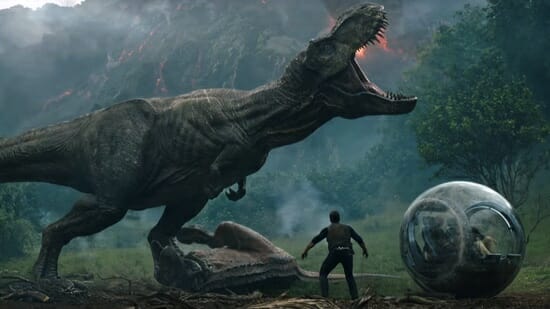
Jurassic World: Fallen Kingdom isn’t the best or worst film in the franchise, but it’s certainly the most dully competent. Twenty-five years after Steven Spielberg ruled the summer with his vision of an island overrun by the most magnificent, terrifying dinosaurs you’ve ever seen, director J.A. Bayona provides us with just one more perfectly below-average blockbuster that occasionally grasps what’s so primal and wondrous about the subject matter. The film deals with the fallout from 2015’s Jurassic World, which ended with the dino-centric amusement park imploding and most of the mighty creatures being killed. But three years later, scientists discover that an active volcano on the island is going to kill off the last of the dinosaurs, a fact that troubles Claire (Bryce Dallas Howard), who has become a fierce advocate for preserving their various species. Now regretting her role in running a park that profited off these mammoth reptiles, she enlists former love Owen (Chris Pratt) to help rescue the beasts. Jeff Goldblum makes a cameo as the offbeat scientist Ian Malcolm—his job is to give congressional testimony that, very handily, highlights the trilogy’s underlying themes in ominous tones. There’s meant to be some dark moral complexity in these films’ depiction of humanity’s desire to create its own dinosaurs—we’re playing God!—but like so much of this silly, by-the-numbers tentpole, the intellectual handwringing is really an excuse for self-perpetuation. The evil masterminds behind the creatures’ abduction just want to make a buck, and so does everybody responsible for Jurassic World: Fallen Kingdom. Such financial expediency isn’t going to go extinct anytime soon. —Tim Grierson
18. Star Wars: The Last Jedi (2017)Box office: $1.33 billion
Director: Rian Johnson

The Last Jedi, unlike its predecessor, has the freedom to be daring, and perhaps the most thrilling thing about it—and there are many, many thrilling things—is how abundantly it takes advantage of that freedom. If The Force Awakens was basically just Star Wars told again in a new, but familiar way, The Last Jedi challenges the audience, challenges the Star Wars mythos, even challenges the whole damned series itself. It blows the universe up to rebuild it; it is a continuation and a new beginning. And more than anything else, it goes places no Star Wars film has ever dreamed of going. In a way, the success J.J. Abrams had with The Force Awakens, particularly how decidedly fan-servicey it was, laid the groundwork for what The Last Jedi is able to pull off. That movie reminded you how much power and primal force this series still had. This movie is an even more impressive magic trick: It uses that power and force to connect you to something larger. Not everything in The Last Jedi works perfectly, but even its few missteps are all founded in the desire for something new, to take risks, to push an American myth into uncomfortable new directions. —Will Leitch
17. Harry Potter and the Deathly Hallows: Part II (2011)Box office: $1.34 billion
Director: David Yates
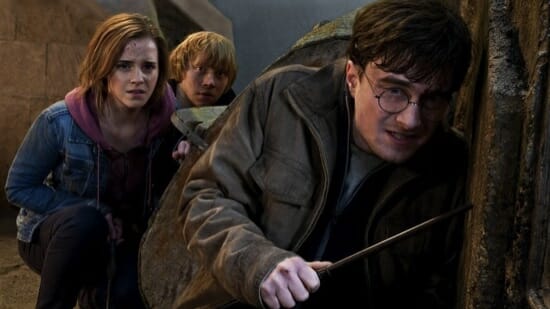
It all ends. And to be sure, it was a fitting end for the storied franchise. Perhaps no other series of children’s films (and few series of films period) has delivered as consistently good visuals and narrative as Harry Potter. The event that was Harry Potter and the Deathly Hallows: Part II can be called nothing less than epic. Picking up right where Part 1 left off, Harry grieves by the seaside grave of the fallen Dobby. His gravestone reads “A Free Elf.” The death of Dobby left moviegoers, even those schooled on and prepared by the source material, gutted. It’s one thing to absorb the pathos from the words on the written page, but the movie medium can pack a harder punch. Of course, without a reverent retelling of the story crafted by the novel’s author, the words become hollow on the screen. And over the course of eight films, the Potter franchise has tried on four directors and two writers, finding success and failure through numerous evolutions. All the while, the three central actors—Daniel Radcliffe, Emma Watson, and Rupert Grint—grew up along with hordes of avid fans. The story depends so much on caring for Harry. Played with timidity by the ever-boyish Radcliffe, we first met Harry as he made his bed under the stairs in the unwelcoming home of a relative. Cast out because he was different, the bespectacled Harry won us over with each installment in the series, managing, often awkwardly, to combat the forces of Voldemort with pure goodness. But as students of the books know, Harry’s innocence is but part of his defense. And the grand plan, politics and treachery, play out in Part II in a clever and challenging manner. What started out in 2001 as a kid’s fantasy matured into something of surprising import and lasting impact. —Jonathan Hickman
16. Black Panther (2018)Box office: $1.35 billion
Director: Ryan Coogler
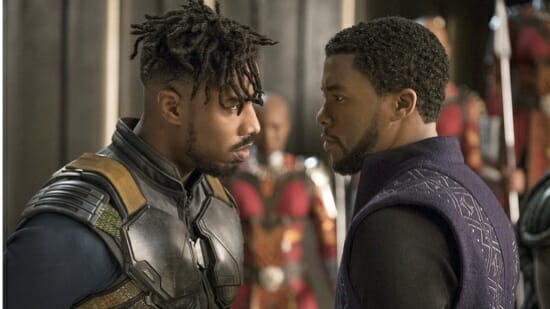
Black Panther might be the first MCU film that could claim to most clearly be an expression of a particular director’s voice. We shouldn’t go so far as to call it auteurist, because it’s still a Disney movie and (perhaps ironically) a part of that monopolizing Empire—i.e., eat the rich—but Black Panther’s action scenes, especially, feel one with Coogler’s oeuvre. Look only to an early scene in a South Korean casino, in which T’Challa (Chadwick Boseman), Okoye (Danai Gurire) and Nakia (Lupita Nyong’o) plan to intercept a deal between Klaue and everyone’s favorite CIA milquetoast, Everett Ross (Martin Freeman, lovable) for a vibranium-filled artifact which Klaue stole from some colonizer-run museum with Killmonger’s help. We’re introduced to Klaue through the surprising spryness of his violence—Andy Serkis, too, freed from mocap, is still an amazing presence, even as a gangster shitbag—and Coogler gets on his wavelength, carving out the geography of the casino in long tracking shots, much like he convinced us to love stained, shitty-seeming Philadelphia gyms in Creed by helping us to comprehend the many crevices and corners of each hole in the wall. When the casino brawl breaks out into the streets, morphing into a death-defying car chase (slow motion thankfully kept to a minimum), we feel as if we know exactly what these characters—and this wonderful director—are capable of. Cue magnificent Vince Staples track. —Dom Sinacola
15. The Super Mario Bros. Movie (2023)Box office: $1.36 billion
Directors: Aaron Horvath, Michael Jelenic
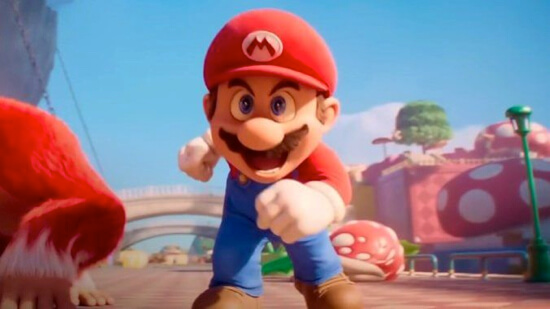
The most tastefully restrained thing about The Super Mario Bros. Movie is that it somehow took nearly 30 years to arrive. The new movie comes from hit factory Illumination, and though Illumination has a clear house style, it’s also apparently amenable to being overwritten with Nintendo’s code—which is to say, yes, the worlds of Mario look pretty much as a fan would picture it, translated into shiny computer animation. The colors mostly pop, the character designs are largely adorable and nothing looks too eerily, uncannily human. Even in the movie’s nominally non-fantastical Brooklyn, Mario (Chris Pratt) and Luigi (Charlie Day) are slightly cartoonier than the family and colleagues who scoff at the idea of two brothers striking out on their own with a plumbing business. While attending to a plumbing emergency, the brothers are sucked into some kind of pipe vortex and separated in a strange new world. Mario lands in the Mushroom Kingdom, where he meets excitable little mushroom guy Toad (Keegan-Michael Key) and the brave Princess Peach (Anya Taylor-Joy), who frets over an imminent attack from the fearsome turtle-dragon Bowser (Jack Black). Luigi has wound up in Bowser’s territory, so Mario, Toad and Peach set off to rescue him while fortifying their defenses against Bowser. In one context, The Super Mario Bros. Movie might seem downright reprehensible: It’s a brand extension with only vacuous and insincere things to say, designed to set children in search of dopamine-hit recognition (was that Yoshi?! Will he be in the sequel?!). In the context of having a seven-year-old daughter who grinned through much of the movie and laughed with me at a silly Jack Black tune, it seems mostly harmless. —Jesse Hassenger
14. Avengers: Age of Ultron (2015)Box office: $1.41 billion
Director: Joss Whedon
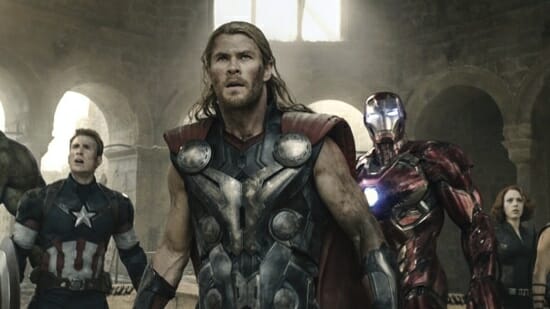
The second Avengers film was warmly received when it initially arrived, but then suffered a bit of immediate blowback, with many superhero genre geeks asserting themselves that although it was undeniably an entertaining film, it represented something of a step back from Joss Whedon’s record-smashing original. Even if it can’t quite match it, and occasionally feels like a bridge toward the next Avengers story, there’s still a whole lot to enjoy in this action-packed yarn. James Spader excels as the voice of the godlike Ultron—a wonderfully arrogant, immature AI character who is only undermined by plot, rather than performance. Ultimately, though, we may remember Age of Ultron more for the storyline fallout it helped generate in the MCU, as Tony Stark’s guilt at creating Ultron is instrumental in driving his position in the fabulous Civil War. Looking back on it in the wake of several other MCU films, its stature has somewhat grown as a result of what it has helped build. —Jim Vorel
13. Frozen II (2019)Box office: $1.45 billion
Director: Jennifer Lee, Chris Buck
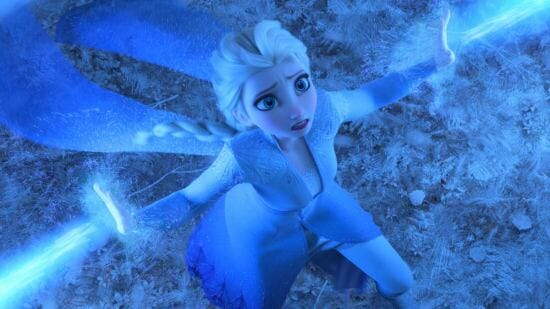
There’s a bit of diminishing returns with the sequel to Frozen, the aching feeling that this exists not for any compelling narrative or artistic reasons but because Disney didn’t feel like leaving an easy billion dollars on the table. To the studio’s credit, though, it didn’t have to be this good; almost anything with the name “Frozen II” and Anna and Elsa on the poster would’ve been an instant smash hit. Frozen II expands on the original in a way that makes sense, and doubles down on what made it work: Extravagant showtunes and dazzling computer animation.—Garrett Martin
12. Top Gun: Maverick (2022)Box office: $1.49 billion
Director: Joseph Kosinski
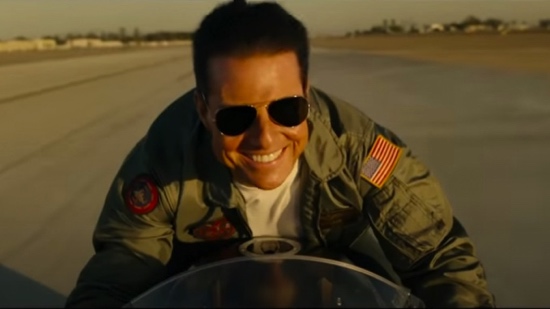
Not quite four years since Mission: Impossible—Fallout and much of Tom Cruise’s purpose remains the same—if it hasn’t exactly grown in religious fervor. In Top Gun: Maverick, the sequel to Tony Scott’s 1986 original, Cruise is Captain Pete “Maverick” Mitchell, a man trapped in the past, refusing to advance his career as resolutely as he refuses to do much of anything besides continue to prove he’s the greatest pilot in the world—a title the film never forgets to remind the audience that Maverick earned long ago—and mourn his best friend, Goose (Anthony Edwards), who died 35 years ago in an accident for which Maverick still feels responsible. Tom Cruise is also, simply, “Tom Cruise,” the only notable show business scion left to throw his body into mind-numbing danger to prove that it can be done, to show a younger generation that this is what movies can be, what superstars can do. Must do. The more modern action films teem with synthetic bodies bursting apart at the synthetic seams, the more Tom Cruise builds his films as alters upon which to splay his beautiful sacrificed flesh. To that end, Joseph Kosinski is the precisely correct director to steer Cruise’s legacy sequel. As was the case with Kosinski’s Tron: Legacy, Maverick seems to exist to justify its existence, to update an IP that seems to only work in the past. For Top Gun this means translating Scott’s vision of sweat-drenched beach volleyball and unmitigated military spectacle into a soberer IMAX adventure, moving from the halcyon days of Reagan’s America to a world with no more need of a man like Maverick. “The future’s coming, and you’re not in it,” he’s told; every one of his superior officers appears to have no patience for him left. One can’t help but imagine that every new Tom Cruise vehicle is a way for him to reckon with that. Kosinski’s dogfights are pristine, incredible feats of filmmaking, economical and orbiting around recognizable space, but given to occasional, inexplicable shocks of pure chaos. Then quickly cohering again. If Scott’s action was a melange of motion never meant to fully cohere, keeping the American dream just that, then Kosinski is dedicated to allowing the audience a way into the experience. With his regular cinematographer Claudio Miranda, he revels in symmetry to keep the audience tethered. A wide glimpse of a dogfight in total, resembling a beach scene earlier, so suddenly appeared silently in the vast theater and unlike anything I’d ever really seen before, I gasped.—Dom Sinacola
11. Furious 7 (2015)Box office: $1.52 billion
Director: James Wan
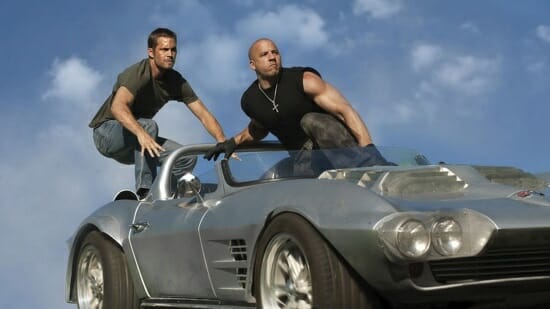
Watching the seventh installment of the adrenaline-fueled Fast & Furious franchise, one gets the distinct impression that, when faced with a creative choice, the filmmakers asked themselves, “What’s the most insane, over-the-top thing we can do here?” Then they did just that. For a series of films that has been a continual escalation in physics-defying stunts, Furious 7 takes it to an entirely new level. The result is a damn lot of fun. Furious 7 is part revenge thriller, part daring heist, and more than a little of a loving goodbye to a dear friend. Franchise star Paul Walker died in a car crash before filming was complete, and both his life and death loom large over the movie. As his character, Brian O’Conner, experiences one harrowing escapade after another, you wait for the moment where he meets his end. It feels inevitable, and waiting around every corner. There are more than a few instances where Walker’s face is digitally pasted on another body—his brothers stood in for him to help finish the production. The movie is also a celebration of his life. There’s much talk about family in the Furious films; the gang’s been picking up strays and bringing them into the fold since day one. The chemistry between the cast is undeniable, and it’s easy to see how much everyone involved enjoys themselves. Furious 7 traffics so heavily in history that it will carry the most weight with already extant fans, especially in an emotional sense. That said, there are enough WTF action moments and eye candy to sell the movie to more than just diehards. —Brent McKnight
10. The Avengers (2012)Box office: $1.52 billion
Director: Joss Whedon
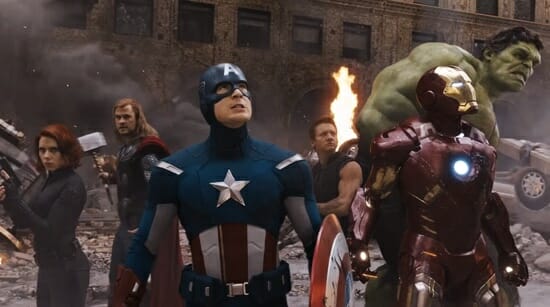
Nestled amongst the gaudy box office numbers of Joss Whedon’s blockbuster is a much simpler achievement. Yes, The Avengers should evoke a deserved appreciation of Whedon’s directorial skills. And yes, the film’s release and reception make for a natural “And that’s when it was official” moment that the MCU took over Hollywood. But for comic book fans especially, The Avengers represents the first instance of the superhero team dynamic truly captured and sustained on film. Even though the X-Men and the Fantastic Four had received big screen treatment, those films were all still pretty static. The interaction between both heroes and villains were slow, separate vignettes rather than two-way, three-way or more-way battles. If Raimi’s Spider-Man showed why comic book superheroes are fun, The Avengers showed why superhero teams are. —Michael Burgin
9. The Lion King (2019)Box Office: $1.66 billion
Director: Jon Favreau
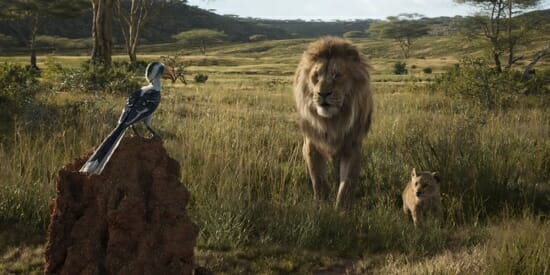
The Lion King feels less like a more “realistic” version of the classic animated original than a bloodless X-ray of it. The new Disney trend of making “live-action” versions of their animated catalog—“live-action,” of course, being the exact wrong term for what this is—can have a purpose besides the obvious profitability of reviving an existing brand name if its goal is to conjure the spirit of the original rather than artificially reinflate its corpse; David Lowery’s Pete’s Dragon wasn’t perfect, but it felt like a fond cover rather than, well, taxidermy. That’s what the new Lion King feels like: It feels like taxidermy. It feels like computers attempting to impersonate real life and doing so with such rigid, determined accuracy that the result feels both emotionless and even a little ghoulish. What exactly are these creatures? The movie is dutifully mounted, and Favreau brings the same dogged professionalism he brought to The Jungle Book, a film with many of the same problems as this film. It does its job all too well. The problem is that The Lion King is The Lion King, you know? This is a universally powerful story, with terrific songs and countless funny and fascinating supporting characters. It’s a classic of performance and sensation. This version, seemingly by design—like that was the damned plan all along—drains every bit of life from it … in order to make it more “realistic.” I would love to watch a documentary about these beautiful animals in the flesh. I would love to watch the original film with its joy and grandeur and scope and sense of fun. This? This bizarre, literal-minded thing? I don’t know what this is. —Will Leitch
8. Jurassic World (2015)Box office: $1.67 billion
Director: Colin Trevorrow
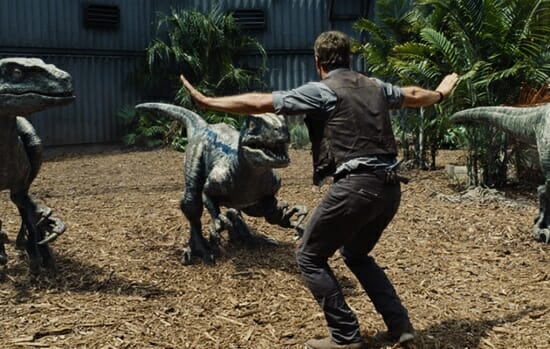
Jurassic World marks the fourth entry in its paleontological franchise, but it’s probably more important as the second chapter in the story of Chris Pratt’s unexpected ascent to movie stardom. Pratt, seemingly born to make a career out of playing lovable doofuses, made his goofy tenor work for him in Guardians of the Galaxy. With Jurassic World, he’s shed that skin almost entirely in favor of aping the hard-jawed macho men of the 1950s B-movie canon. That transformation lends the film inevitability: As if brand recognition didn’t give Jurassic World enough of a box-office edge, the image of Pratt riding a motorcycle side by side a quartet of raptors should sold Colin Trevorrow’s picture to the crowds. That scene, and others like it, let Jurassic World function as a suitably thrilling roller-coaster ride. Unsurprisingly, they don’t add up to a particularly good movie, but Trevorrow has enough diversions stored up his sleeve that the film’s inconsistencies and overarching sloppiness almost don’t matter. Here, we finally get to see John Hammond’s loopy vision of a dino theme park brought to fruition. —Andy Crump
7. Spider-Man: No Way Home (2021)Box office: $1.92 billion
Director: Jon Watts
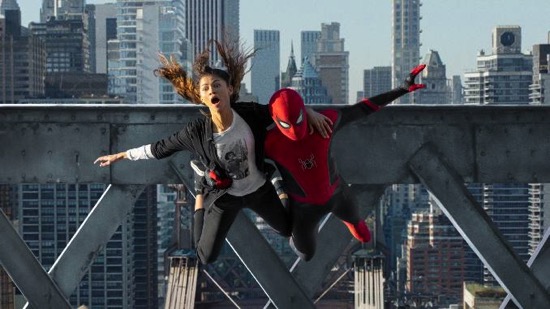
Spider-Man: No Way Home holds no surprises. It’s an intriguing case study of corporate collaboration, a self-aware meme machine, and a lackluster movie that understands its hero so well that the disservice stings all the greater. What director Jon Watts’ trilogy has done better than its Raimi and Webb counterparts is convince us that Peter Parker is a kid. A nervous, charming goodie-goodie with a headful of knowledge and not a lick of sense. So it fits that when he, his girlfriend MJ (Zendaya) and BFF Ned (Jacob Batalon) face problems—blown out of proportion by crippling cases of teen-brain—he’d run off to Dr. Strange (Benedict Cumberbatch) and plead for a magical worldwide memory wipe without really considering consequences or alternatives. What follows, with characters from past Spidey films getting interdimensionally sucked to this NYC, only really makes sense if you’ve been keeping a keen eye on casting rumors. If so, congratulations: They’re here and shenanigans ensue. After so long playing with the legacy and impact of Spider-Man, No Way Home finds its way back. All the spectacle, all the stunt performers and stunt casting—it all evaporates like so many Snapped extras when confronted with small, connected scenes of human-level dramatic filmmaking that remind you why broke loser Peter Parker resonates with us so deeply in the first place. It’s valuable, this recollection, but getting back to Spider-Man basics is a shallow victory with diminished returns. Perhaps the fact that Spider-Man: No Way Home finds any success in this familiar territory, after devoting itself so wholly to unwieldly examinations of its own IP, is itself its biggest surprise. —Jacob Oller
6. Avengers: Infinity War (2018)Box office: $2.05 billion
Directors: Anthony Russo, Joe Russo
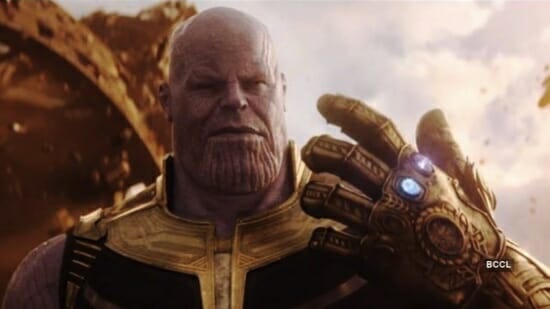
Avengers: Infinity War is epic in a way that has been often aspired to but never fully grasped when it comes to the translation from comic book panel to the Big Screen. It’s what happens when moviemakers take their source material seriously, eschewing unnecessary melodrama even as they fully embrace the grandeur, the sheer spectacle, of it all. (And if there’s one lesson Disney has learned, it’s that if you focus on the viewer experience, the product lines will take care of themselves.) For every frenetic fight scene in Avengers: Infinity War—and there are plenty of them—there are myriad character interactions and emotional beats the audience has been prepped for by the previous films (okay, maybe not 2008’s The Incredible Hulk). As a result, writers Christopher Markus and Stephen McFeely have ample room to riff and play as characters meet for the first time or see each other again. Some of the interactions are easy to anticipate (if no less enjoyable)—the immediate ego clash between Cumberbatch’s Dr. Strange and Downey Jr.’s Iron Man, for example—but our familiarity with these characters adds resonance to nearly every scene and every line, as the vestiges and ripples of emotional arcs laid down in the last decade’s worth of movies bolster even the smallest moment. —Michael Burgin
5. Star Wars: The Force Awakens (2015)Box office: $2.07 billion
Director: J.J. Abrams
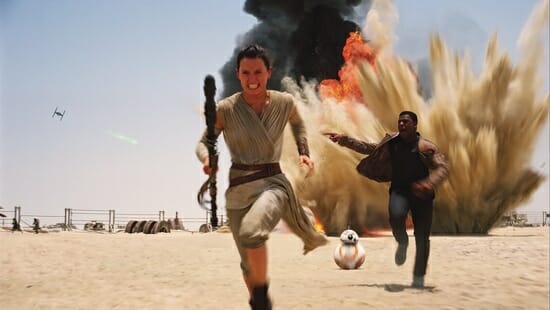
The Force Awakens was the remedy to the near-terminal Prequel-itis of fans. J.J. Abrams and company accomplished this act of restorative cinema primarily through a return to the “dirty future” aesthetic that made the Original Trilogy feel so real (no matter how absurd the dialogue being delivered by the characters). That’s not to say CGI is lacking, but whereas budget and technology constraints helped the first three films and an overabundance hurt the next three, the balance between practical and special effects in The Force Awakens feels near perfect. I say “primarily” not to take away from other factors, such as casting. Daisy Ridley, John Boyega and Adam Driver are all solid, and Oscar Isaac brings a palpable vigor to his role. Ultimately, The Force Awakens just feels right in ways the Prequels never did. —Michael Burgin
4. Avatar: The Way of Water (2022)Box office: $2.21 billion
Director: James Cameron
![]()
Avatar: The Way of Water is a promise—like the titular Way as described by a beatific, finned Na’vi fish-people princess, the film connects all things: the past and the future; cinema as a generational ideal and one film’s world-uniting box office reality; James Cameron’s megalomania and his justification for Being Like That; one audience member and another audience member on the other side of the world; one archetypal cliché and another archetypal cliché; dreams and waking life. Avatar’s sequel can be nothing less than a delivery on everything Cameron has said, hyperbolic or not, he would deliver. What’s less clear is exactly what Cameron’s intending to deliver. The Way of Water’s story is a bare bones lesson in appealing to as many worldwide markets as possible, the continuation of the adventures of Bostonian Jake Sully (Sam Worthington, who’s spent the past decade trying not to sound like an outback chimney sweep) as he raises a Na’vi family with like-warrior-minded Neytiri (Zoe Saldaña, screaming from inside her golden prison) and realizes that Earthlings aren’t going to stop colonizing Pandora just because they had their shit kicked in a lifetime ago. The Way of Water’s true achievement is that it looks like nothing else but the first Avatar, unparalleled in detail and scale, a devouring enterprise all to itself. Watching The Way of Water can at times feel astonishing, as if the brain gapes at the sheer amount of physical data present in every frame, incapable of consuming it, but longing to keep up. No film will ever be this beautiful in my lifetime, at least until the next Avatar.—Dom Sinacola
3. Titanic (1997)Box office: $2.22 billion
Director: James Cameron

Decades after its theatrical debut, James Cameron’s blockbuster epic is still so ubiquitous in the pop culture zeitgeist, its filmmaking marvels are drowned out by young Kate-and-Leo nostalgia and that damned Celine Dion caterwaul (not to mention the now late James Horner’s iconic score). Cameron’s ear for dialogue may be woefully leaden, but he’s a shrewd storyteller, plunking a Romeo-and-Juliet redux aboard the doomed ocean liner and flanking the fictional romance with historical details, groundbreaking special effects and jaw-dropping visuals. The narrative lapses are at times dumbfounding—let’s face it, old Rose, who tosses a priceless artifact into the abyss after waxing ad nauseam about herself, is a thoughtless jerk—and the aforementioned dialogue is awful (to say nothing of Billy Zane doing his best mustache-twirling silent movie villain) but Titanic remains a painstaking testament to the all-in Hollywood spectacle.—Amanda Schurr
2. Avengers: Endgame (2019)Box office: $2.80 billion
Directors: Joe Russo, Anthony Russo
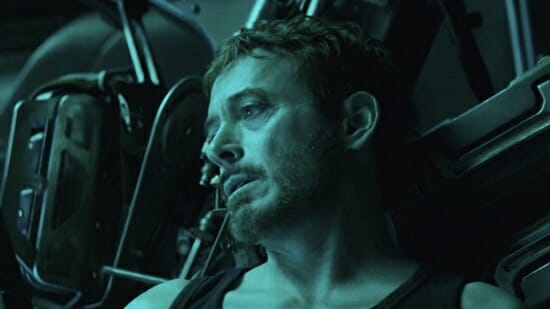
Where does one begin? When it comes to Avengers: Endgame, that question is not so much an expression of wanton enthusiasm as a practical challenge in evaluating the destination toward which Kevin Feige and company have been steering story and viewer alike for the previous 11 years and 21 films. Though there have been plenty of three-hour-plus movies and even a few 20+ entry movie franchises, there’s really nothing to compare with what Disney and Marvel Studios have pulled off, either in terms of size, quality and consistency of cast (a moment of silence for Edward Norton and Terrence Howard), or in how narrow the chronological window, all things considered, those movies were produced. Though we’ve praised it often, casting remains the cornerstone of the MCU. Whether by pitch-perfect distillations of decades-old comic book characters (Captain American, Thor, Spider-Man) or charisma-fueled reinventions of same (Iron Man, Ant-Man, Star-Lord), the MCU’s batting average in terms of casting is not only practically obscene, it’s a crucial ingredient in ensuring the thematic and emotional payoff (and box office payday) of Endgame. Moviegoers have been living with these actors, as these characters, for over a decade. For many, this version of these characters is the only one they know. This is why the sudden ashification of so many heroes at the end of Infinity War hit even the most cynical comic book veterans right in the feels and left less hardened viewers confused and distraught. It’s also why, as Avengers: Endgame opens (after another swift kick to the stomach just in case we’ve forgotten the toll of that snap), the audience cares about not just what the surviving heroes are going to do, but how they are doing in general. It gives the film an emotional resonance that’s unusual not only in pulpier genre offerings but in films in general. This connection makes the quiet moments as valuable to the viewer as the spectacle, and for all the fireworks in the third act, Avengers: Endgame is very much a film of quiet moments and small yet potent emotional payoffs. Comic book fans know the thrill of following all your favorite characters through a multi-issue storyline that culminates in a “universe at stake” ending. Now, thanks to 21 movies in 11 years and one massive, satisfying three-hour finale, moviegoers do, too. —Michael Burgin
1. Avatar (2009)Box office: $2.92 billion
Director: James Cameron
![]()
It makes sense that Avatar is the highest grossing movie ever made: Irony and insincerity have no place in its extended universe. Whether or not James Cameron intended to crib the world of Pandora and its futuristic inhabitants from practically every fantastical ur-text ever conceived, it hardly matters, because Avatar is modern mythmaking at its most foundational. Cameron still seems to believe that “the movies” can give audiences a transformative experience, so every sinew of his film bears the Herculean effort of truly genius worldbuilding, telling the simple story of Jake Sully (Sam Worthington) and his Dances with Wolves-like saving of the Na’vi, natives to the planet of Pandora, from the destructive forces of colonialism. Cameron wants us to care about this world as much as Jake Sully, and by extension James Cameron, does, crafting flora and fauna with borderline sociopathic obsessiveness, at the time pushing 3-D technology to its brink to bring his inhuman imagination alive. It worked; “unobtanium” is actually a real thing. Four sequels feels like a disgusting gambit for a man whose ambition may have long ago outpaced his sense of storytelling, or sense of reason, or sense of what our oversaturated, over-franchised culture can even stomach anymore. But Cameron’s proven us wrong countless times before. —Dom Sinacola






































